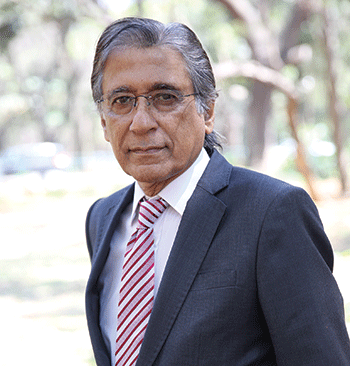Letter from the Editor
 That Indian education is broken and in serious need of mending is incontrovertible. Since 2005, the Annual Status of Education Report (ASER), published by the inestimable Mumbai/Delhi-based Pratham Education Foundation, has been warning that although access to primary education in rural India, which grudgingly hosts over 60 percent of India’s population, is improving, learning outcomes are falling. ASER 2017 released in Delhi in January, reports the sad plight of a representative sample of 14-18-year-old youth. Twenty-five percent cannot read basic texts fluently in their vernacular languages, a mere 5.3 percent have signed up for vocational education programmes, 31 percent are working on small family farms and the rest have migrated to the country’s over-crowded, crumbling cities in pursuit of casual and/or low-end jobs.
That Indian education is broken and in serious need of mending is incontrovertible. Since 2005, the Annual Status of Education Report (ASER), published by the inestimable Mumbai/Delhi-based Pratham Education Foundation, has been warning that although access to primary education in rural India, which grudgingly hosts over 60 percent of India’s population, is improving, learning outcomes are falling. ASER 2017 released in Delhi in January, reports the sad plight of a representative sample of 14-18-year-old youth. Twenty-five percent cannot read basic texts fluently in their vernacular languages, a mere 5.3 percent have signed up for vocational education programmes, 31 percent are working on small family farms and the rest have migrated to the country’s over-crowded, crumbling cities in pursuit of casual and/or low-end jobs.
The secondary education scenario is similarly bleak. In 2010, a representative sample of 15-year-olds from Himachal Pradesh and Tamil Nadu, reportedly the country’s better educated states, were selected to write PISA (Programme for International Student Assessment). The Indian batch was ranked #173 of students from 174 countries who wrote the exam that year. Since then, India has withdrawn from PISA, written every three years. If foundational pre-primary, primary and secondary education is weak, obviously higher education standards can’t be good either. And sure enough, none of India’s 800 universities — some of them of over 150 years vintage — is ranked in the Top 200 World University Rankings league tables published annually by the highly respected institutional rating agencies QS and Times Higher Education. The unkindest cut? Neighbouring China has six in the Top 100 QS league table and seven in THE Top 200.
To ascertain the causes and effects of this alarming situation, after the disappointing Union Budget 2018-19 presented to Parliament and the people on February 1 made a paltry provision of Rs.85,010 crore (0.45 percent of GDP) for educating the world’s largest child and youth population (670 million), EducationWorld reached out to over 50 of the country’s most respected school principals and vice chancellors soliciting their opinions for mending the country’s broken education system. Regrettably, of the dozen plus leaders of higher education institutions, a mere four made the time and minimal effort required to respond, suggesting that vice chancellors are too immersed in the minutiae of administration to look at the big picture. However, of the 50 school principals contacted, 36 responded, a sufficiently large number to enable our indefatigable managing editor Summiya Yasmeen to write this month’s unprecedented cover story.
There’s much more in this Spring mega issue of EW. Check out our Budget 2018-19 Focus special report. It’s a response to politicians’ usual bleat of paucity of resources for human capital development. I advise all right-thinking citizens to mindfully read and generate a national debate on these vitally important issues. For the sake of our children and theirs. Education is too important to be left to the neta-babu brotherhood.















Add comment